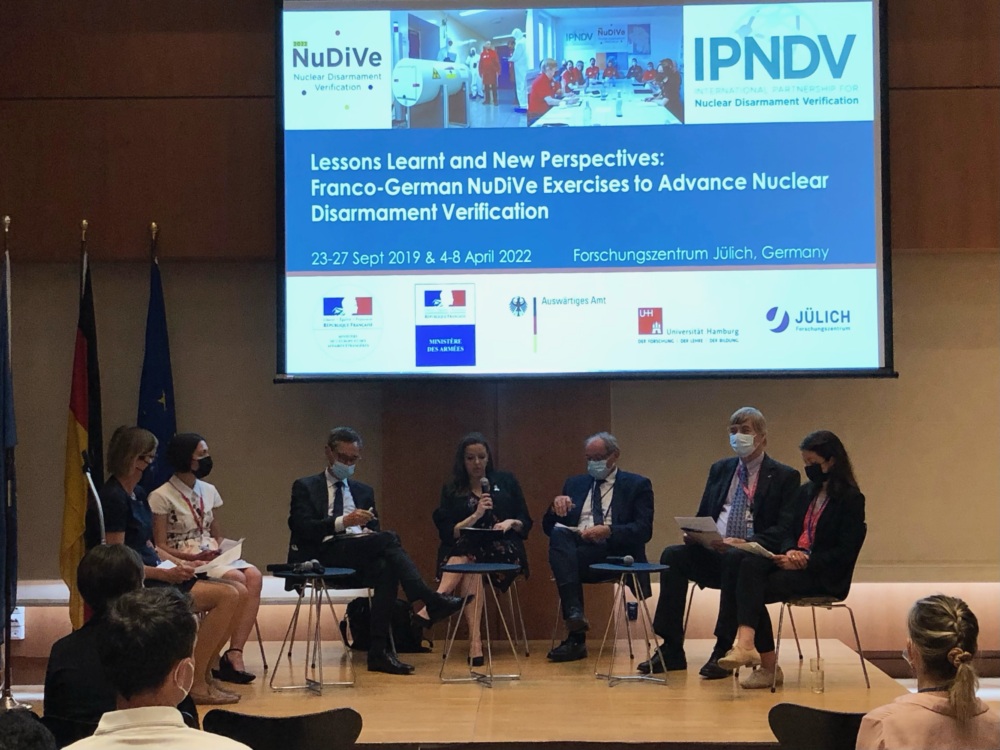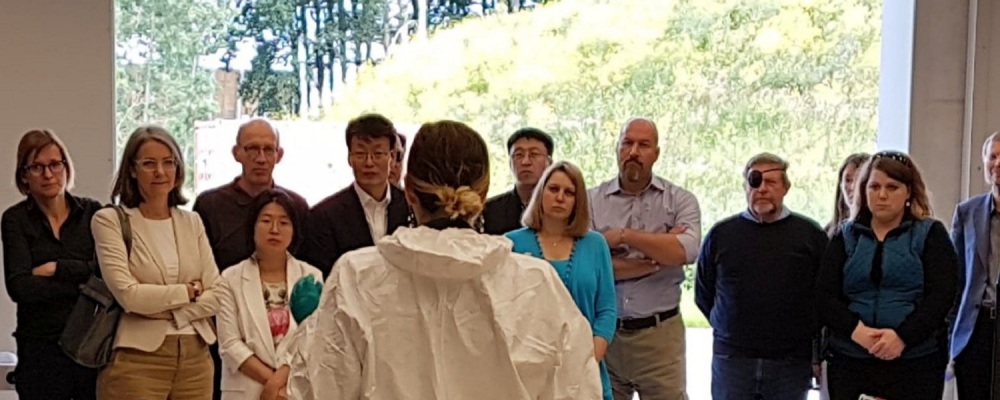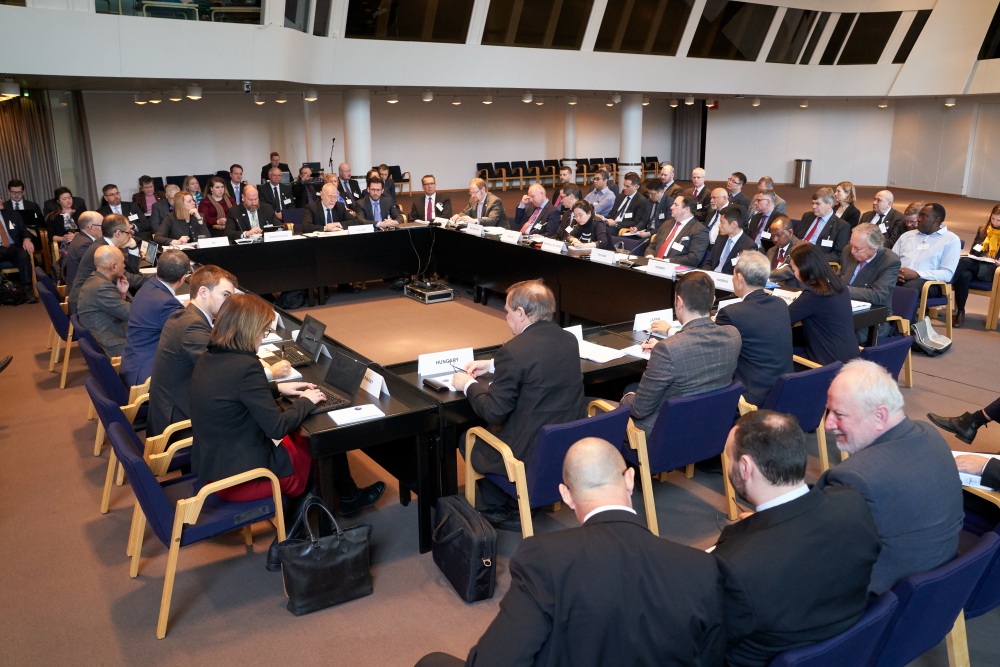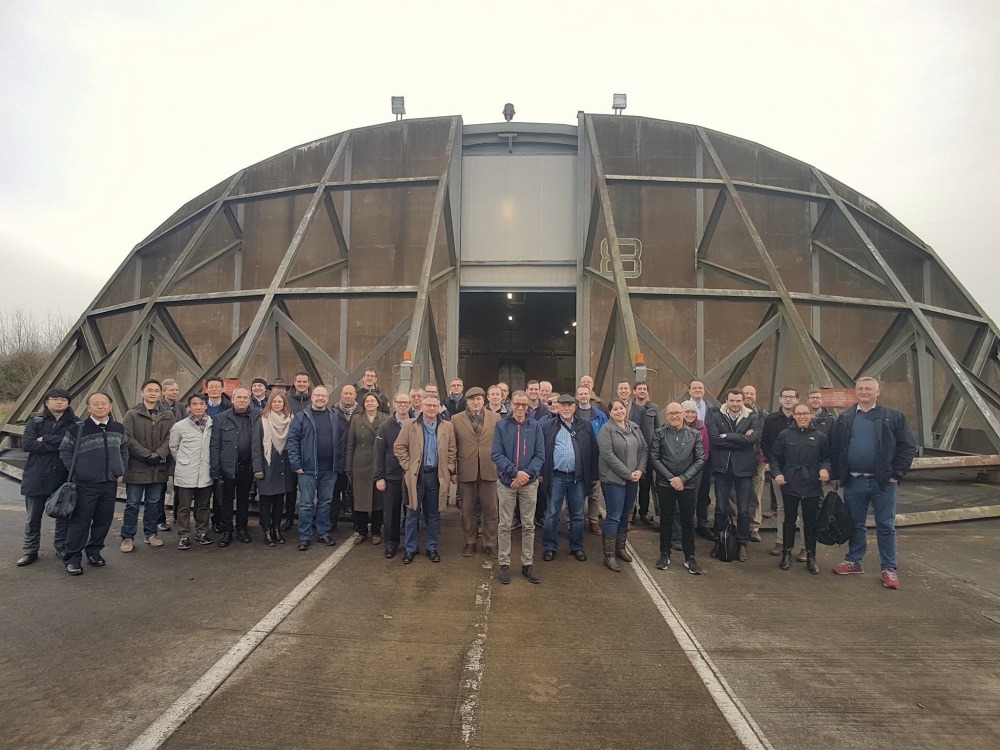This post was written by Edwin
Kindler, an intern working with NTI’s International Fuel Cycle
Strategies program. Kindler is a graduate of the Department of War Studies at
King’s College London, where he received a Master of Arts degree in
Non-Proliferation and International Security. He also holds a Bachelor of
Science in Diplomacy and International Relations from Seton Hall University.
The International
Partnership for Nuclear Disarmament Verification (IPNDV), a project
led by NTI and the U.S. Department of State with 25 participating countries, identified
“testing and exercising potentially promising technologies and procedures” as a
key next step when partners concluded Phase I of the multi-year project in
December 2017. This month, as part of Phase II of the project, IPNDV partners follow
through with two practical activities. Although the activities are not
conducted with a specific treaty or political arrangement in mind, they allow
IPNDV member countries to investigate potential tools for nuclear disarmament
verification and identify aspects of those tools that need more attention.
The first, a Belgian-led technology demonstration,
will assess methods to detect the presence or absence of nuclear material and to
distinguish weapon-grade from civil-grade nuclear material. The second activity,
a Nuclear Disarmament Verification exercise called “NuDiVe”
focused on a specific aspect of a simulated nuclear warhead dismantlement is
being hosted in Germany jointly by German and French teams. Both activities
will involve multiple IPNDV partner countries.
Below, three IPNDV members discuss
their involvement in planning and organizing the upcoming technology
demonstration and exercise, why they think these are important, and their hopes
for the outcomes of these events.

Alessandro Borella, Ph.D., is a Senior Researcher for SCK•CEN, the Belgian Nuclear Research Center, which is hosting the Belgian-led technology demonstration.
What is your involvement in the IPNDV?
I joined the IPNDV during Phase I in 2016 and participated first in the “Technical Challenges and Solutions” and later in the “Technologies for Verification” working groups. Over the years I made available my expertise in non-destructive measurement methods for the purposes of the verification of nuclear material in a disarmament context.
Tell us about your demonstration. For example, who is involved and why did you and your colleagues at SCK•CEN think it was important to take this on?
Thirty people from 10 countries will be involved in the technology demonstration, or measurement campaign. At SCK•CEN we have the availability of well-characterized nuclear material that allows us to study the performances of measurement methods with respect to differences in composition, mass, and shielding materials. This availability is quite rare
nowadays and the type of material aligns with what the IPNDV is working on. The
measurements will be carried out in highly secured settings which also are
typical of a real-life disarmament verification scenario.
What are you most looking forward to?
I’m particularly looking forward to the
measurement campaign because it is the result of a team effort at SCK•CEN by
people from different institutes. Specifically, the preparation of the
measurement campaign is very challenging given the needs associated with the
implementation of safety and security at the facility, as well as the
logistical aspects associated with hosting 10 measurement teams and their
equipment. Given the number of teams, the measurements will take place on a tight
time schedule. This makes the coordination work even more important.
What do you expect to come out of this
demonstration? What would be next steps?
The measurement campaign will result in
experimental data taken in well-defined measurement configurations.
This data will allow us to address
questions, for example, about the confirmation of the presence or absence of a
nuclear weapon, or about the possibility to distinguish nuclear material meant
for civil purposes from the material deployed in a nuclear weapon.
We envisaged that data will be
available within the IPNDV community for further analysis. The lessons learned
from this exercise will help others to better select technologies to be used in
future disarmament scenarios.
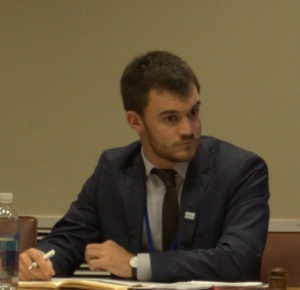
Alexandre Quinet is a Policy Officer for Nuclear Disarmament under the Directorate General for International Relations and Strategy of the French Ministry of the Armed Forces.
What is your involvement in the IPNDV?
France has been involved in the IPNDV since its beginning in 2015, and I personally got involved in the initiative in 2017. The verification of nuclear disarmament is a very valuable subject for building confidence and understanding between nuclear weapon states and non-nuclear weapons states. In this regard, we highly value the quality of the work undertaken at IPNDV. The French delegation gathers relevant
expertise from the Ministry of Foreign Affairs, the Ministry of the Armed
Forces, and the Atomic Energy Commission.
Tell us about NuDiVe. Why did the
French team think it was important to examine Step 8 (dismantlement)?
Two years ago, Germany and France
decided jointly to create a field exercise, within the time frame of the IPNDV Phase
2. The NuDiVe exercise was therefore built within the frame of our respective
national involvements in IPNDV. The exercise will be conducted in Germany at
Forschungszentrum Jülich. We decided to focus on Step 8 (the dismantlement
phase within the IPNDV framework) for several reasons. First, it is the crucial
moment during a disarmament process when the chain of custody has to be broken
temporarily in a way that does not hamper the confidence of inspectors. Second,
this is also the moment when non-proliferation and national security concerns
are at the highest. Last, this phase has not been explored by previous
international exercises. A quick clarification on the way we apprehended step 8:
the exercise does not simulate the physical dismantlement of a nuclear warhead,
but rather the inspection procedures needed to ensure the non-diversion of
fissile material (absence measurement) during dismantlement.
What is your particular involvement in
the NuDiVe exercise?
The input of the French team as a whole
was to provide the perspective of a nuclear weapon state, adding realism to
some features of the scenario, inspection procedures, and modalities. As a
nuclear weapon state, we were able to help build the exercise in line with
real-life practices and constraints.
What are you looking forward to about
this exercise?
The aim of the NuDiVe exercise is not
to create a “one-size fits all” model for verification. Any future treaty will
have to define its verification provisions during negotiations. The aim here is
to further our knowledge of what needs to be considered to verify dismantlement
while respecting non-proliferation, safety, security obligations, and other
national security constraints. I therefore expect participants to test the
procedures we imagined to see how relevant they are, and to benefit from their
input; a specialized evaluation team will also be tasked to critically assess
the exercise, in order to draw the most valuable lessons.
What do you expect to come out of this
exercise? What would be next steps?
Two reports will be published: an
inspection report from the inspection and host team, and an evaluation report
from the evaluators’ team. I believe these documents will be valuable
deliverables for the disarmament community, and I hope that that participants
will benefit from an interesting experience that will create more knowledge on
nuclear disarmament verification. We expect NuDiVe best lessons to be useful
for future phase(s) of IPNDV: enrich our collective understanding, build new
tabletop or in-field exercises.

Alicia Swift, Ph.D. is a Program Manager within the Nonproliferation and Arms Control Research and Development Group at the Y-12 National Security Complex in Oak Ridge, TN.
What is your involvement in the IPNDV?
I have recently become involved with the IPNDV, starting with the Phase II IPNDV working group meeting held in Helsinki in March 2019. I have been participating through my support of the Nuclear Disarmament Verification (NuDiVe) exercise, which is planned for Sept. 23-27, 2019, in Jülich, Germany.
What are your reactions to the
Partnership’s work moving from “paper to practice” in this second phase?
I think that moving from “paper to
practice” is very helpful for exploring topics that were solely conceptual
discussions during IPNDV Phase I. Hands-on activities often aid with learning,
as well as with locating gaps and strengths, with the additional benefit of
further cementing working relationships between participants.
What is your involvement in the NuDiVe
exercise?
Because of my past experience with
planning, executing, and evaluating arms control/disarmament exercises, such as
the LETTERPRESS exercise held by the Quad
Nuclear Verification Partnership in October 2017, I have had a minor
role as an advisor during the planning stages of the NuDiVe exercise. As such,
I attended a dry run in June in Jülich, Germany, which went extremely well and
certainly demonstrated the hard work and expertise of France and Germany in the
planning process. I will also participate in the exercise as a member of the
Evaluation Team, which will be responsible for writing a report at the
conclusion of the exercise.
What are you looking forward to about
this exercise?
I am very excited about working with
international partners to explore nuclear verification concepts and
technologies, particularly those pertaining to chain of custody. I think there
will be a number of good outcomes and lessons learned for IPNDV and the broader
global community.
What do you expect to come out of this
exercise? What would be next steps?
I think outcomes will include an
increased understanding by the exercise participants of some of the nuances
associated with verification approaches for nuclear weapon dismantlement
activities, thus informing recommendations for possible future research in
nuclear disarmament policy and/or technology. Next steps could include work for
IPNDV Phase III, such as exploring equipment authentication and certification,
or work for scientists to adapt existing technology and/or develop new
technology.
More about the SCK•CEN demonstration
and the NuDiVe exercise will be published on IPNDV’s website as it becomes
available. Read more about the IPNDV’s recent Joint Working Group Meeting in
Utrecht here.
IPNDV Partners will meet again for a Plenary session in Ottawa, Canada at the
end of 2019.
